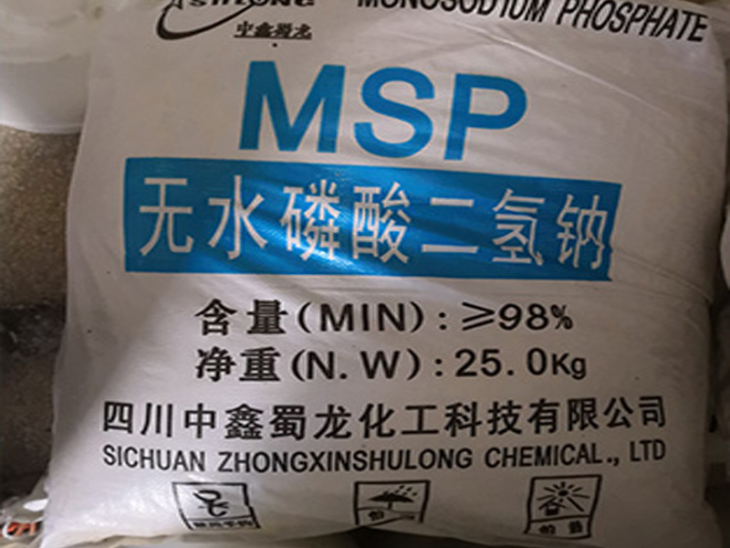Anhydrous sodium dihydrogen phosphate manufacturer

Sodium dihydrogen phosphate safety technical specification Part: Chemical name Chemical Chinese name: Sodium dihydrogen phosphate chemical English name: sodium dihydrogen phosphate
Molecular formula: NaH2PO4·nH2O
Executive Standard: HG/T2767-2009
CAS No.: 7558-80-7 (anhydrous); 13472-35-0 (2 water)
Molecular weight: 137.99
Part II: Composition/information information P2O5, %≥44.6,58.0
Main content, %≥97.0
Part III: Hazard Overview Health Hazards: Micro-toxic. Irritating to eyes and skin. The heat is divided into phosphorus oxide and sodium oxide smoke.
Part IV: First Aid Measures Skin Contact: Remove contaminated clothing and rinse with plenty of running water.
Eye contact: Lift eyelids and rinse with running water or saline. Seek medical attention.
Inhalation: Remove quickly from the scene to fresh air. Keep the airway open. If breathing is difficult, give oxygen. If the breathing stops,
Breathing immediately. Seek medical attention.
Ingestion: Drink plenty of warm water and induce vomiting. Seek medical attention.
Part V: Fire Fighting Measures Hazardous Characteristics: It cannot burn itself. In case of high heat, the high toxic fumes are explained.
Hazardous combustion products: phosphorus oxide, phosphine.
Fire-fighting methods: Firefighters must wear full-body fire-fighting and anti-virus suits to extinguish the fire in the upwind direction. Whenever possible, remove the container from the fire to the open space.
Then choose the appropriate extinguishing agent to extinguish the fire according to the cause of the fire.
Part VI: Emergency treatment for leakage emergency treatment: isolation of contaminated areas and restrictions on access. It is recommended that emergency personnel wear dust masks and wear general work clothes.
Do not touch the spill directly. Small amount of leakage: Avoid dust, carefully sweep it, and place it in a bag and transfer it to a safe place.
Large amount of leakage: collected or transported to a waste disposal site for disposal.
Part VII: Handling and Storage Operation Precautions: Closed operation, local exhaust. Prevent dust from being released into the air of the workshop. Operators must be specially trained to strictly follow the operating procedures. Operators are advised to wear self-priming filter dust masks, chemical safety glasses, anti-poisoning overalls, and rubber gloves. Avoid dust. Avoid contact with acids. Equipped with leakage emergency treatment equipment. Empty containers may be harmful residues.
Storage Precautions: Store in a cool, ventilated warehouse. Keep away from fire and heat. Protect from direct sunlight. The package is sealed. Should be stored separately from the acid,
Avoid mixing. The storage area should be provided with suitable materials to contain spills.



